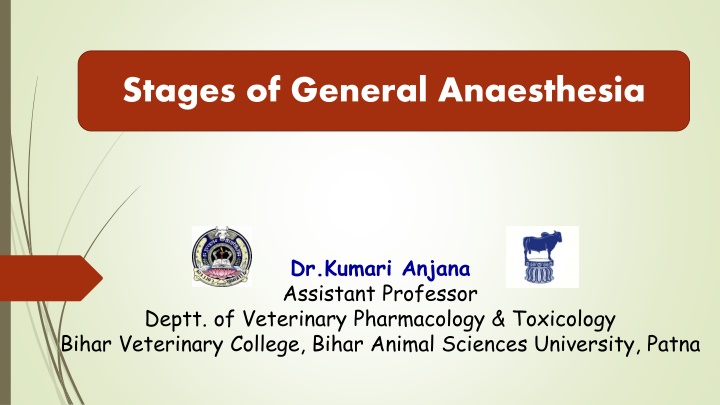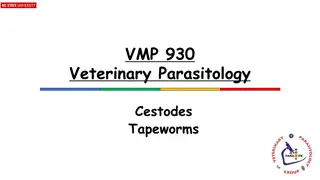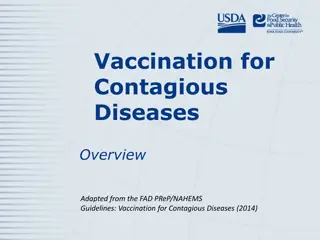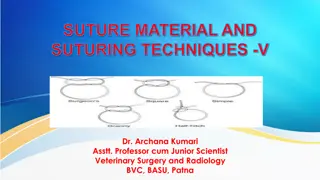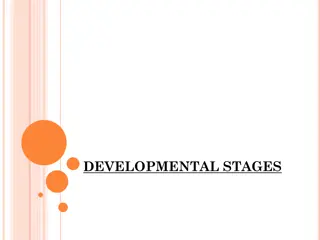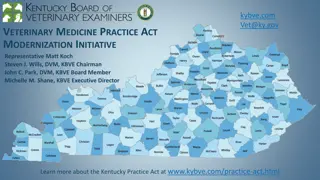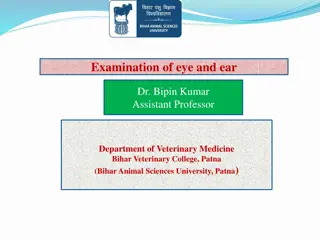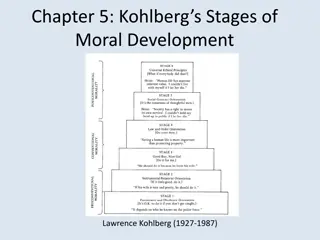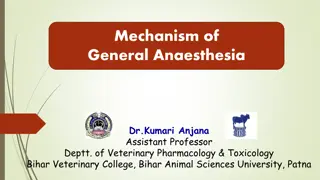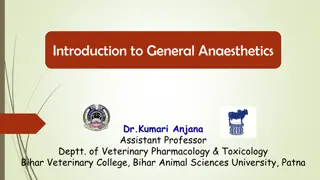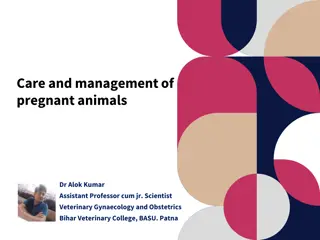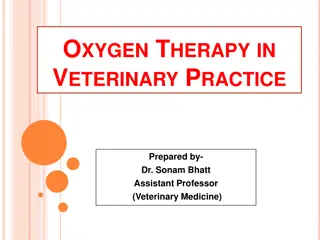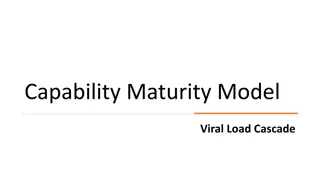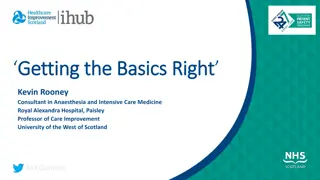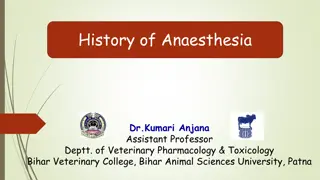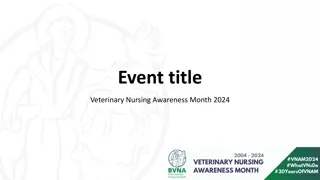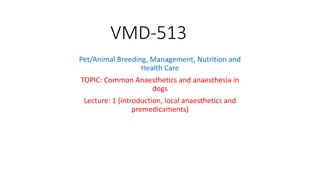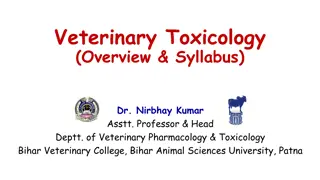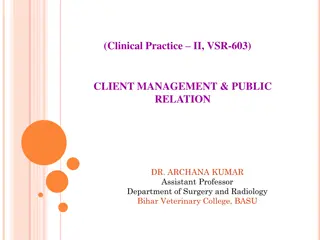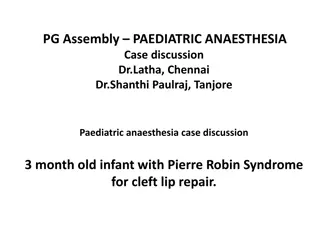Stages of General Anaesthesia in Veterinary Practice
Explore the four stages of general anaesthesia in animals, from the excitement and analgesia phase to delirium, surgical anaesthesia, and medullary paralysis. Learn about the criteria used to describe depth of anaesthesia and the specific characteristics of each stage. Dive into the complexities of respiration, reflexes, and consciousness during the anaesthetic process, as explained by Dr. Kumari Anjana, Assistant Professor at Bihar Veterinary College.
Download Presentation

Please find below an Image/Link to download the presentation.
The content on the website is provided AS IS for your information and personal use only. It may not be sold, licensed, or shared on other websites without obtaining consent from the author.If you encounter any issues during the download, it is possible that the publisher has removed the file from their server.
You are allowed to download the files provided on this website for personal or commercial use, subject to the condition that they are used lawfully. All files are the property of their respective owners.
The content on the website is provided AS IS for your information and personal use only. It may not be sold, licensed, or shared on other websites without obtaining consent from the author.
E N D
Presentation Transcript
Stages of General Anaesthesia Dr.Kumari Anjana Assistant Professor Deptt. of Veterinary Pharmacology & Toxicology Bihar Veterinary College, Bihar Animal Sciences University, Patna
A.E.Guedal (1920) describe depth of anesthesia by dividing it into stages and planes for ether anesthesia based on following criteria: Respiration Eye ball movement Presence and absence of various reflexes Gillespie added few other criteria to describe depth of anesthesia: Laryngeal reflexes Pharyngeal reflexes
The depth of anesthesia may be classified into four stages: Stage I or ( stage of voluntary movement or Excitement) stage of Analgesia Stage II or ( stage of involuntary movement or Excitement) stage of Delirium Stage III or surgical anaesthesia Plane 1 & Plane 2 : Light surgical anaesthesia Plane 3 & Plane 4 : Deep surgical anaesthesia Stage IV or medullary paralysis.
Stage I (stage of Analgesia) This stage starts from the beginning of anaesthetic inhalation and lasts up to the loss of consciousness. The animal struggles to avoid inhaling strange and unpleasant anaesthetic vapours. There is release of adrenaline due to fear and excitement. Pupil is dilated. Sensory cortex is depressed. Respiration is rapid and deep, with rise in BP and rise in pulse rate. All sensory reflexes are present.
Stage II (Stage of Delirium ) Starts from loss of consciousness. The animal lose its ability to stand, assumes lateral recumbency. Gradually loses consciousness and reacts to external stimuli with reflex struggling or movements of limbs (with pedal or galloping movements). Reflex vomition occurs in dogs unless feed is withheld. Nystagmus (slow rhythmic oscillation of the eye ball) in horses. Depression extends to motor cortex. Respiration is very irregular, with rise in BP and rise pulse rate. All sensory reflexes are present. The stages I and II are collectively comprise induction of Anaesthesia.
Stage III (Stage of Surgical anaesthesia ) This stage extends from onset of regular respiration to cessation of spontaneous breathing. Depression is extended from cortex and mid brain to spinal cord. It is divided into 4 planes. Planes 1 and 2: Light surgical anaesthesia Planes 3 and 4: Deep surgical anaesthesia.
Plane 1 Depression is extended to mid brain and spinal cord partly, with slow and regular respiration, normal BP and normal pulse rate and presence of all neuromuscular (NM) reflexes.
Plane 2 The depression covers all spinal cord, with slow and regular respiration, normal BP and pulse rate. Absence of eye lid, skin, swallowing (pharyngeal) and photomotor reflexes. The corneal and cough reflexes are present. Presence of cough reflex prevents entry of tissue debris into respiratory tract during pharyngeal surgery. When muscle relaxants are used as pre-anaesthetics, the level of anesthesia is assessed by noting the photomotor reflex. Most of the surgical operations are done in Plane 2 of Stage III.
The animal is not generally allowed to pass into deep surgical anaesthesia, where there is marked depression of respiration accompanied by hypothermia, hypothalamic thermoregulatory center). Plane 3 In Plane 3 the depression covers whole of spinal cord, with thoracic or abdominal respiration, fall in BP and rapid and weak pulse and CV functions (depression of
Plane 4 In Plane 4 the depression extends to part of medulla shallow abdominal respiration (intercostal paralysis), fall in BP and rapid and weak pulse, dilated pupil and absence of all NM reflexes.
Stage IV This stage starts from cessation of breathing and extends till cardiovascular failure and death. This stage is called stage of medullary paralysis where the vital medullary centers are paralyzed cessation of respiration, severe fall in BP, Weak pulse and absence of all NM reflexes. animals dies unless urgent revival measures are not readily available (artificial respiration, administration of analeptics and CV stimulants) to counter excess CNS depression are not instituted at once.
Totipotent anaesthetics: Ether and chloroform induce all stages (i.e. I, II, III & IV) of anaesthesia and therefore called as Totipotent anaesthetics (i.e. 100% anaesthesia produced). Incomplete anaesthetics : whereas nitrous oxide and trichloroethylene do not produce stage 3 and 4 and therefore called as Incomplete anaesthetics (50% anaesthesia). Methoxyflurane, halothane and barbiturate (stage II absent, stage of involuntary Excitement) are considered as good agent for induction of anaesthesia.
